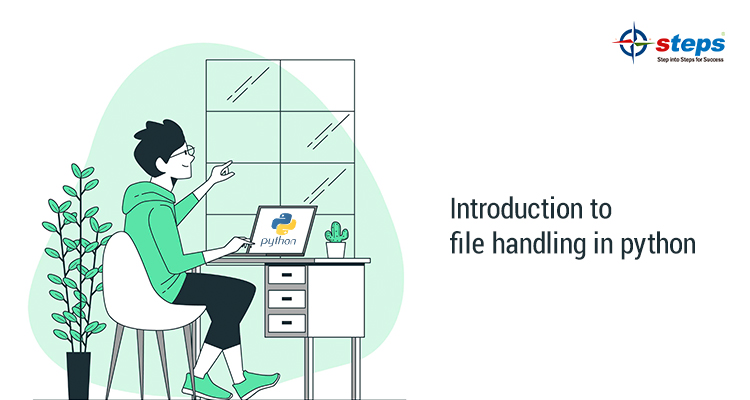Introduction to file handling in python

Let’s python script to fetch data from the internet and then process it. If the data is tiny, this processing can be done every time the script is run, but if the data is large, repetitive processing is impossible, so the processed data must be saved. This is where data storage or file writing comes into play.
When writing data to a file, it’s important to keep the file’s consistency and integrity. Once you’ve saved your data to a file, the most crucial important is retrieving it, because data is stored as bits of 1s and 0s in computers, writing and reading are both significant aspects of file handling in Python.
How to write to a file using Python?
Let’s understand the standard steps used in File Handling.
• Creating a new file to write.
• Writing and appending to a file.
• Bringing a file to a close.
File Handling: Opening
You must first open a file before you can read or write to it. To open a file, use the built-in Python method open(). This function accepts two arguments: the file name and the mode (read mode, write mode). It returns a file object that can be utilised with various functions. To open a file in Python, use the following syntax.
Syntax of the Python open function:
file object = open(file_name [, access_mode][, buffering])
Writing File in Python
To write to a file first, you must open it in write mode, then you can enter data to a file and write to it. It is important that all previously written data will be overwritten. The write() function in Python allows you to save a string or a sequence of bytes to a file. This function returns the size of data stored in a single Write call as a number.
Appending to a File
The majority of the time, you’ll be writing to a file without erasing its previous contents. Appending to a file means writing to it while keeping the existing information. Now, opened a file named file1.txt using append mode. This instructs python to avoid overwriting data but start writing from the last line. So what it would do now after the ending lines it will add “I am appending something to it!” and then we have closed that file.
Closing a File
We must first open a file before we can close it. Close() is a built-in method in Python that allows you to close a file that has been opened.
Basic operations of file handling in Python have been addressed in this article, in which python allows you to read, write, append, delete, and so on. There are several learning institutions to learn python full stack developer training in Kerala. You may choose the best option for python django training in Kochi, as they provide excellent python training as well as improved job opportunities.

